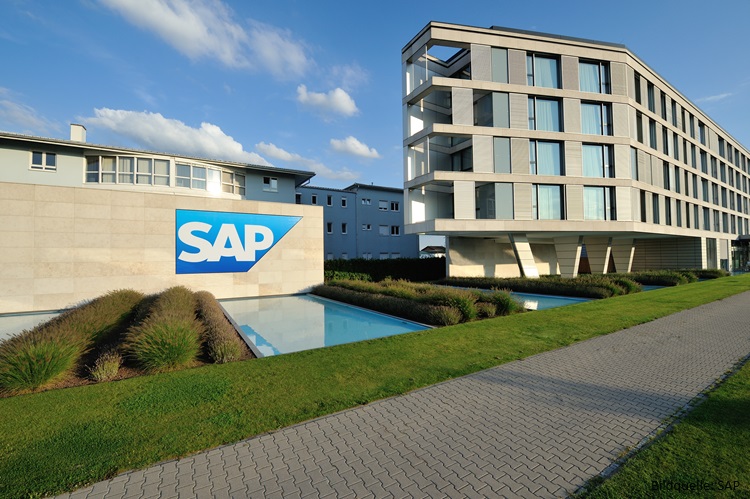Rolle im Portfolio
The db X-trackers Russell 2000 ETF provides equity exposure to US micro- and small-caps, representing about 10% of the market capitalisation of the broader RUSSEL 3000 Index. The Russell 2000 index correlated 93% with the S&P 500 Index and 90% with the MSCI World USD Index over the last three years; hence its usefulness as diversifier within a broader equity allocation appears limited.
As the Russell 2000 Index is well diversified across individual holdings and sectors, the ETF can best be deployed as a core holding complementing other US mid and large cap holdings. The ETF is suitable for investors believing in an improving US economy, especially one driven by growing domestic demand.
For tactical purposes, this ETF might be suitable for investors believing that large caps will unload their cash reserves through acquisitions in the hunt for external growth targeting small- and mid-cap companies.
Fundamentale Analyse
The Russell 2000 Index has outperformed large cap indices over the last ten years. The index had an annualised return of 10.1% over that time period, compared to 7.3% for the S&P 500 Index and 8.1% for the MSCI World USD Index.
Small cap valuations making their way back to the peak reached in April 2011, when they appeared to be far more expensive based on their price-to-earnings multiple compared to large caps. As of this writing, the Russell 2000 Index is trading at a P/E multiple of 16.9 compared to 15.3 for the S&P500 Index. However, coming out of a recession, many large companies are sitting on huge cash reserves after several quarters of cost-cutting. In the hunt for growth, they will target more often than not small- and mid-cap companies as acquisition candidates. According to Moody’s non-financial US corporations are believed to sit on roughly $1.0 trillion in cash, increasing the chance of another good year for small caps.
The Russell 2000 Index is more heavily biased towards financial stocks and less exposed to energy stocks as compared to the S&P 500 Index. The small-cap index favours regional banks that are reliant on mortgage lending. Therefore, an improving US housing market and falling oil prices could benefit the performance of the Russell 2000 Index relative to the S&P 500 Index in the near term.
A supportive environment for small caps has been created by expansionary monetary and fiscal policies. Since the mid 1930s, small caps have returned 19% on an annualised basis--about a 10 percentage point annualised outperformance as compared to large caps—during periods of negative real short-term interest rates, i.e. low nominal interest rates coupled with high inflation. Those periods are usually the product of a broader crisis, during which large-cap companies will seek to cut costs and preserve cash, leaving them with huge cash reserves as mentioned before. During the following quarters, many of these same companies unload their cash by acquiring small caps, hence explaining a portion of the outperformance of small caps in such circumstances. During the latest period of negative real interest rates (beginning in December 2009) US small caps have outperformed large caps by 2.4 percentage points on an annualised basis.
Lower unemployment coupled with rising consumer spending, which accounts for roughly two-thirds of US GDP, should support the economic recovery in the coming months. However, in a worst case scenario the looming “fiscal cliff” which could be reached at the end of the year poses additional risks. Tax increases and spending cuts could cost the average family thousands of dollars per year, according to the Wall Street Journal. A more likely scenario is simply the expiration of the payroll tax holiday, which would cut average take-home pay by around $1,000 a year.
Indexkonstruktion
The Russell 2000 Index is a sub-index of the Russell 3000 Index, representing the bottom 10% of companies as measured by market capitalisation of the broader Russell 3000 Index. The index holds around 2000 of the smallest publicly traded companies in the US and is constructed to provide a broad and unbiased small-cap indicator. The constituents are selected based on a combination of market cap and current membership of the Russell 3000 Index. The index is reconstituted annually to account for market performance. The index is well diversified across different sectors. As of this writing, the biggest sector allocation is financials (22% of the index’s value), followed by IT (17%) and industrials (15%). On an individual security level, the biggest exposure is Pharmacyclics (0.29%) making it apparent that the index has very little risk to any single issuer.
Fondskonstruktion
The db X-trackers Russell 2000 uses swap-based replication methods to track the Russell 2000 Index. The fund’s swap counterparty is Deutsche Bank. Instead of holding the actual securities in the index as in a physically replicated ETF, the fund contracts with a swap provider which delivers the return on the index (minus a fee) in exchange for the return on the fund’s collateral basket. The collateral backing the swap is held by third-party custodian State Street, which also monitors the counterparty exposure for each db x-trackers ETF. The collateral basket consists of shares of European, American and Asian blue chip companies. In the event of counterparty default, there is a risk that the liquidator or administrator may freeze the collateral basket, forcing fund holders to wait to reclaim their assets. Collateral levels are initially set at 105-120% of the fund's NAV. UCITS stipulates that derivative instruments from any single counterparty cannot represent more than 10% of the fund's net asset value (NAV), but in practice, the fund effectively retains zero counterparty exposure given the aforementioned level of over-collateralisation. db x-trackers does not engage in securities lending. The ETF does not distribute dividends to investors.
Gebühren
The fund levies a total expense ratio of 0.45%, which is at the upper end of the range for ETFs tracking US small caps. Other potential costs associated with holding this fund which are not included in the TER include swap fees, bid-ask spreads and brokerage fees.
Alternativen
As of writing, there are a few providers offering ETFs which provide exposure to US small cap indices. The largest in terms of total assets under management is the CS ETF on MSCI USA Small Cap, tracking the MSCI US Small Cap Index which has around 1800 constituents. Credit Suisse uses optimised sampling in order to achieve its investment objective, investing in a little over half the constituents of its reference index. This approach could lead to a higher tracking error, especially in adverse market conditions.
Investors looking for a more like-for-like alternative will find an ETF from Source, tracking the Russell 2000 Index. This ETF uses synthetic replication and levies a total expense ratio of 0.45%.
















